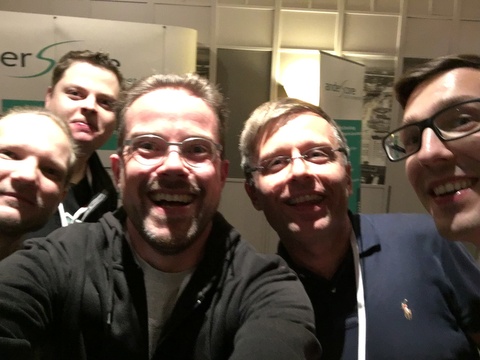Past summer: October wrap-up
This year, time flies. Writing this post at about 7pm, it’s already dark. October had some brilliant moments regarding weather and I enjoyed the golden autumn very much. As announced last month, I send the “final” manuscript of Spring Boot Buch to dpunkt.verlag in the last week of September. 2 weeks later, I received three packets full of paper. 500 pages, with a lot of red corrections and annotations. I worked together with my fantastic wife Christina through the paper and fixed the LaTeX sources of the book. We still had to update some examples. There’s still so much change going on in Spring land. Whereas last month I had to update huge amounts of the Actuator chapter, it’s Spring Security this time. See the announcement of 5.0.0.M5. I just had it fixed and added a new starter (spring-boot-starter-security-reactive) and about 2 weeks later, it disappeared. So right now, I just didn’t bother fixing it again, because the finished correction (spelling and grammar that is) of the book was send to my publisher. The agreement we have is that the layout will be done now and the chapters marked as “will probably change” are done last. In the end, you can preorder the book right now: Preorder Spring Boot 2: Moderne Softwareentwicklung mit Spring 5, it will be published in time in January 2018.
My book will include a preface by Jürgen Höller himself. Jürgen and I met at Topconf last week, where he held a closing keynote and spoke about (literally) a life in Open Source. I like the non technical keynote and the inside a lot. Jürgen recently was awarded with the JAX Special Jury Award at JAX London for his work for Spring and I am more than happy to have him in my book:

I was in Darmstadt this month and spoke about Spring Boot myself:
Jörn Hameister wrote an excellent post about my content, thanks a lot! For that talk I prepared a new starter, that might come in handy for some with the release of Spring Boot 2.
The JUG Darmstadt meeting was great, meeting my friends Gerd, Ralf und Niko. Nikos Serverlessbuch is already finished and I’m currently reading the one he gave me as a gift. I’m really happy to be in his preface 🙂
The slides above are my first slides bearing innoQ logos and colors. I was so nervous (actually, I was a wrack) by the end of September. Departing the old company took his toll and being afraid if innoQ and consultancy would work for me and in what setting. I had a hard time thinking straight. Right now I’m with a customer in Aachen and actually not doing Spring. Despite that, I’m learning a lot thanks to a great internal slack and from my innoQ colleague Jerry. Wether it’s technology, domain, you name it. There seems to be an expert for everything. I’m really happy about the development. And what is also great is the fact that discussions, with colleagues and also customer, are really high level with mutual respect. At the moment, I’m happy and I feel finally good again. Looking forward to the coming weeks.
